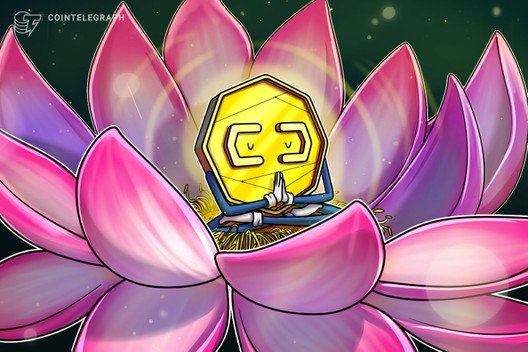Set to Grow, India’s Crypto Industry Must First Toil Tough Ground
Several factors make India the hallmark country for crypto adoption. Experts, however, agree that several challenges still stand in the way.
Over the past few months, India’s cryptocurrency market has continued to be in a constant state of flux. From crypto bans imposed by the country’s central bank to a historic ruling by its Supreme Court to lift that ban, for most onlookers it appears that India’s crypto market has experienced a rebirth.
A recent industry report put together by exchange OKEx and research platform Coinpaprika indicates that the crypto space in India is set to soar to greater heights, especially because the country leads the globe in terms of remittances, not to mention that it has a national fiat currency that is depreciating and unstable. The report also highlights a loosening government policy as one of the factors boosting the adoption of cryptocurrencies in the country. While sharing his point of view with Cointelegraph, Jay Hao, the CEO of OKEx, told Cointelegraph:
“India has always been a vibrant market for cryptocurrencies due to several different factors yet its growth has been stunted by regulation since 2018.”
However, now that the Supreme Court of India has moved to lift the 2018 ban, the report shows an uptick in the volume of cryptocurrencies being traded on India’s local exchanges. Even exchanges outside the country, such as OKEx, have experienced higher numbers of crypto traders.
What makes India ripe for crypto adoption?
To begin with, India has the world’s largest population outflow. In a country that features a population with strong family bonds, India’s large population of immigrants can generate enormous demand for remittances to the nation. According to reports, more than 17 million immigrants sent money back to the country in 2019. Furthermore, remittances by Indian immigrants have ranked at the top globally since 2008.
A World Bank estimate shows that an estimated $83 billion was sent by Indian immigrants back to the country in 2019. In a conversation with Cointelegraph, Sumit Gupta, the CEO of CoinDCX – a crypto exchange based in India — confirmed that “since 2008, India has overtaken China as the world’s top recipient of migrant remittances.”
However, while the cost of large remittances remains relatively low, including those made to facilitate intercorporate investments or aid, fees for remittances made as small personal transfers are high. Furthermore, the lofty remittance fees in most African countries have raised the global average fee to about $7.40, according to reports.
Even though reports show that India’s remittances fees sit slightly below the global average, high demand makes the Indian market ripe for a cheaper and faster alternative. For most market watchers, cryptocurrencies are the next best way to cut fees. Hao further explained that the 17 million Indian immigrants sending money back to the country “are paying very high fees in transactions and conversions.” He added:
“Using cryptocurrencies like BTC or XRP could save Indians a huge amount of money on fees, yet the market is largely yet to be exploited due to the RBI’s previous ban on cryptocurrency.”
Hao’s statements are echoed by Gupta, who believes that “remittances are one of the strongest use cases for cryptocurrencies.” He added that “with almost instantaneous transactions and low fees, Indians will surely benefit from the use of cryptocurrencies when moving money across borders.”
India’s unstable currency
Experts also agree that another factor set to increase demand for cryptocurrencies in India is the country’s unstable fiat currency. Hao explained that “the Indian Rupee is less stable than ever and the exchange rate with the USD continues to rise.”
The depreciation of the rupee is caused in part by the U.S. Federal Reserve’s consistent interest rate hikes of the dollar before the COVID-19 pandemic, leading to increased demand for the dollar worldwide. Also, the Reserve Bank of India’s efforts to support a weakened economy as a result of the pandemic have destabilized the currency.
According to Hao, the depreciation of the rupee will lead “to a constant depreciation of Indians’ savings and a need to convert their Rupees into a more-stable fiat currency to shield their wealth from inflation.” Once again, with existing strict foreign exchange regulations that make it difficult to directly exchange rupees for more-stable dollars, Hao explained in his statement that demand for peer-to-peer crypto platforms will emerge as a solution to converting rupees to Bitcoin (BTC) then to dollars.
Supreme Court ruling
Since 2018, India’s crypto industry has been held back by a cryptocurrency ban that prohibited banks from offering financial services to crypto-related companies. However, the Supreme Court of India issued a historic ruling in March that consequently loosened the government’s stance on cryptocurrencies.
Even though there have been reports of some banks refusing to offer banking services to crypto firms due to the lack of regulatory clarity, the loosened policies have increased crypto trading volumes in the country. Despite the pandemic that has shaken various industries, the crypto industry in India has had a resurgence. Gupta confirmed this, saying:
“Despite the ongoing global economic downturn caused by the Covid-19 pandemic, the cryptocurrency industry in India has been experiencing a resurgence in user demand and the spike in trading volumes.”
The report by Coinpaprika and OKEx also echoes data from SimilarWeb but specifies that there was a 4,100% increase in new user registrations from India on the OKEx exchange. According to the report, Kraken, Bitstamp and Bitfinex also fall among the exchange platforms that have seen high interest from India since the lifting of the ban in March.
“Indian crypto industry is seeing more participation from individuals and as user sign-ups continue to breach new levels, there are fresh investments in growing exchanges like CoinDCX,” according to Sharat Chandra, an India-based blockchain speaker and startup consultant. “The exchanges want to use the fund infusion to spread literacy around digital assets and increase adoption of cryptocurrencies,” Chandra added.
What needs to be done to boost growth?
Even as Indian talent overseas continues to bring in an increased inflow of remittances to the country, not to mention the Indian government moving to relax its previously harsh stance on crypto, there are still several hurdles in the path of growth for the country’s crypto space. Hao pointed out that “despite the lifted ban, regulatory policy is still vague and many major banks still decline processing crypto transactions.”
Related: Crypto Regulatory Clarity in India: The Missing Piece to Mass Adoption
There are also fears among market analysts that with more open foreign exchange rules, most Indians using crypto as a conduit for exchanging rupees to more-stable dollars might find the entire process unnecessary, thus leading to a decline in the growth of the industry going forward. However, while Hao sees the dark side of the matter, he also highlighted a silver lining:
“India’s young and tech-savvy population and the sheer number of people who live there, give the country all the hallmarks of being one of the world’s major cryptocurrency markets.”
As a solution, Hao proposed the adoption of stablecoins in the country as a way to nurture and grow the developing industry. He said that “there is plenty of space for stablecoins in India to help them [Indian immigrants] convert and move funds more quickly and easily.”
On a different subject, CoinDCX’s Hao proposed improved access to the internet as a possible solution to the increasing growth of India’s crypto industry. Gupta pointed out that the favorable Supreme Court verdict has drawn the attention of many Indians to the benefits of cryptocurrencies. Besides, he said that the pandemic has resulted in Indians spending more time at home and learning how to engage in crypto trading.
Toward the sustainable growth of crypto adoption
As Gupta put it, there are “several factors that set up India as a potential bastion of cryptocurrency adoption.” If crypto trading volumes and the overall interest in crypto in the country are anything to go by, the Supreme Court of India’s move to overturn banking restrictions on crypto firms was the missing link that now adds a layer of credibility to the industry.
To tap into its crypto market, large-scale trading companies are setting up shop in the country or developing products that cater to the Indian market. OKEx, for instance, plans to launch a P2P trading platform where traders will be able to buy cryptocurrencies such as Bitcoin or stablecoins using rupees. Highly ranked exchanges such as Kraken have also announced plans to expand further into the Indian market this year. In addition, at the tail end of 2019, Binance bought the exchange WazirX, placing a foot inside the country’s market.
Apart from remittances, an unstable rupee and regulatory clarity as factors set to contribute to the growth and development of India’s crypto industry, Chandra mentioned that the introduction of leading decentralized finance products can spur the growth of the country’s crypto industry: “Financial institutions to explore Defi and come up with new usage-based personalized products.”




